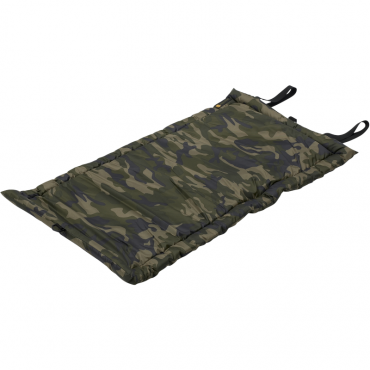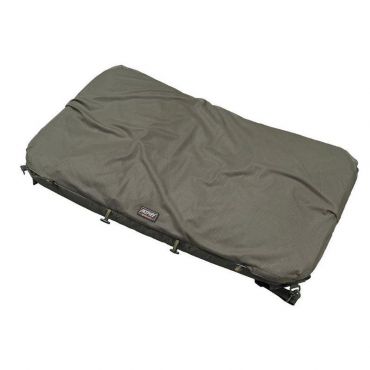Discover the Perfect Carp Unhooking Mats for Ultimate Fish Protection
Our range includes several distinct categories of unhooking mats, each designed for specific carp fishing situations. Flat unhooking mats represent the traditional choice, offering moderate padding and easy transport for mobile anglers. These models work well for smaller carp and quick sessions where portability is essential.
Carp cradles feature raised sides that prevent active fish from sliding off the mat during handling. These cradles provide superior protection for larger carp and are often mandatory at commercial fisheries. The side walls act as a safety barrier, particularly important when working on sloped or uneven banks where fish might otherwise escape back to the water prematurely.
Unhooking mats with legs elevate the fish completely off the ground, offering maximum protection and easier access for unhooking procedures. These elevated designs are ideal for serious specimen hunters who prioritise carp fish care above all other considerations. Portable models focus on weight reduction and compact storage, while luxury versions emphasise maximum padding and integrated features like built-in weigh slings or drainage systems.
At Total Fishing Tackle, we regularly monitor prices to ensure that we offer carp unhooking mats and related fish care products at the most competitive rates. However, if you find the same unhooking mat or carp care equipment cheaper elsewhere, please do not hesitate to contact us, and we will gladly match the price for you.
Carp Unhooking Mats FAQs
What Are Carp Unhooking Mats, & Why Do I Need Them?
Unhooking mats are specialised padded surfaces designed to protect carp during unhooking, photographing, and release procedures. These essential tools prevent damage to fish scales, fins, and the vital slime coating that protects carp from infection and disease. Modern fisheries increasingly require anglers to use proper unhooking mats for any catch over 1.5 pounds, making them a legal necessity rather than an optional accessory.
The well-being of your catch depends heavily on proper fish care techniques. An unhooking mat provides crucial support between the hard ground and delicate fish, preventing injury that could impact the carp’s health and survival after release. For anglers pursuing larger specimen carp, these mats also offer knee protection and easier handling during extended photography sessions. The investment in quality fish care products directly supports the long-term sustainability of your favourite fisheries and ensures healthy stock for future angling pursuits.
What Are the Key Features & Materials to Consider in Carp Unhooking Mats?
The thickness of the padding directly impacts the level of protection your mat provides. Quality mats utilise high-density foam or air-filled chambers to effectively cushion the fish. The surface material should be waterproof and easy to clean. Typically, PVC or reinforced polyester that resists damage from hooks and scales. More padded options are generally preferable, as they provide enhanced protection for the fish during handling.
Size dimensions must match your target fish range. Mats for 10-20 pound carp require different specifications than those designed for 40-50 pound specimens. Larger mats provide more working space but increase transport weight. A vital consideration for mobile angling approaches. Using a larger unhooking mat is generally better for protecting the fish during handling, as it reduces the risk of injury by providing ample space.
Durability indicators include reinforced seams, quality zippers, and robust carry handles that won’t fail during transport to and from the water. Easy cleaning features like removable bases and drainage holes help maintain hygiene between sessions, reducing disease transmission risks. The market offers various portability versus protection trade-offs, with lightweight options sacrificing some cushioning for easier transport.
What Are the Top Brands & Product Recommendations for Carp Unhooking Mats?
Nash unhooking mats are the premium segment with innovative designs like integrated weighing systems and modular components. Their cradles feature superior padding thickness and attention to fish care details that serious anglers appreciate. Trakker models focus on durability and practical features, earning strong feedback from anglers who demand reliable performance across multiple seasons.
Korda fish care products emphasise a scientific approach to carp well-being, with mats designed specifically to minimise stress during capture and release. Fox unhooking mats bring innovative features like pop-up designs and rapid setup systems that appeal to modern specimen hunters. Solar and Shakespeare offer solid mid-range options that balance features with affordability.
Budget-friendly options start around £20 for basic flat mats, while professional cradle systems can reach £150 or more. The key is matching your mat choice to your angling style and target fish size rather than simply choosing the most expensive option available. However, some basic models can start as low as £10, while premium options with advanced features may exceed £100.
How Should I Properly Use Carp Unhooking Mats & Apply Fish Care Techniques?
Pre-wetting your mat before use is essential. Dry surfaces can damage the fish’s protective slime layer and cause unnecessary stress. Always pour water over the entire mat surface and ensure adequate padding remains effective when wet. Position the mat on level ground away from sharp objects or rough surfaces that could cause injury.
Safe fish handling begins the moment your carp touches the mat. Support the fish properly during unhooking procedures, keeping it calm and secure within the mat’s boundaries. For photography sessions, work quickly but carefully. Stressed fish are more likely to injure themselves thrashing against even padded surfaces.
Quick-release techniques minimise the time fish spend out of water. Have your unhooking tools, camera, and any treatment products ready before lifting the carp from the water. Common mistakes include using insufficient padding, failing to wet the mat properly, or attempting to handle fish that are too large for your mat size.








